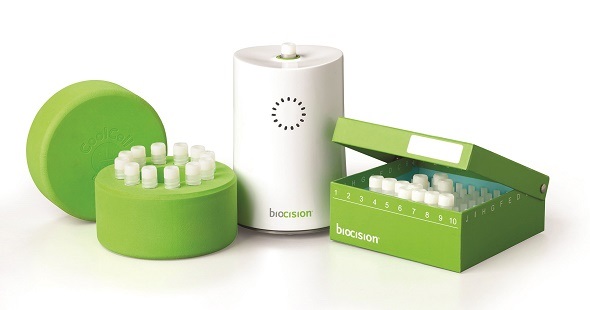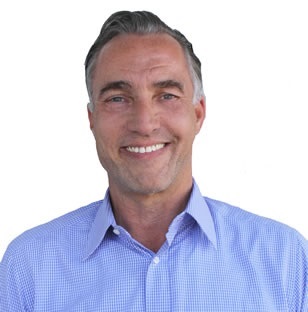How do most researchers and clinicians thaw biospecimens?
Surprisingly, even with decades of cryopreservation research, little progress has been made in the way frozen biospecimens are thawed.
It’s still very common for researchers and clinicians to thaw cells and other frozen biological samples in a variety of manual ways including swirling vials in warm water baths, rolling frozen vials between hands to warm them up, or even placing vials under the arm or in cups of warm water.
What problems do such methods raise?
The manual methods noted above are fraught with a variety of problems. Chief among them are the aspects of introducing sterile frozen samples into a contaminated heat source (e.g. communal water bath) and relying on human interpretation of the end-point.
The end-point can vary widely between technicians and have downstream effects on the specimen such as variability in recovery rates, viability rates, and proliferation.
If the vial being thawed contains a drug or cell therapy product, this human interpretation could have safety or efficacy ramifications.
Could you please outline the new ThawSTAR™ sample thawing system?
BioCision’s ThawSTAR platform is engineered to give a vial heating profile mirroring a water bath, but using a fully solid-state heating method.
The ThawSTAR system delivers highly reproducible thawing day-to-day and unit-to-unit based on temperature sensing algorithms that detect the solid-to-liquid phase change of the vial contents.
ThawSTAR efficiently and reproducibly thaws vials right from LN2 storage as well as those that come from -80°C freezers or dry ice.
ThawSTAR has been tested with a variety of cell types including K562 erythroleukemia cells, human peripheral blood mononuclear cells (PBMCs), human spenocytes, human CD8 T-cells and mouse hybridoma cells. In all cases the cell recovery and viability was equivalent to that seen in a water bath thaw.

What benefits does this system have over conventional thaw methods?
The ThawSTAR automated thawing system has many benefits, the main one being that it standardizes a crucial step in the cryopreservation process.
The ThawSTAR technology completely eliminates the subjective human interpretation of the end-point, and the active light and sound feedback from the instrument during the thawing process keeps the user apprised of the status of the thaw and reduces the risk of ruining vials of cells by e.g. leaving them floating in the water bath.
ThawSTAR also eliminates the risk of contamination which is high in conventional methods because communal water baths are not always properly maintained and rolling vials between hands or placing in armpits are also crude methods.
In GMP settings, water baths are generally avoided due to the risk of contamination and investigators often use alternative methods such as dry bead baths.
Vial thawing in a bead bath can take nearly 7 minutes (compared to ~2 min in a water bath or ThawSTAR) and this longer thawing time could cause additional damage to the cells.
The breakthrough technology in the ThawSTAR platform provides a solid-state thawing process that is more efficient than bead baths and perfect for a GMP environment.
How does ThawSTAR™ compare to other thawing systems on the market?
ThawSTAR is the first technology that customizes the thaw for each individual vial making it ideal for live cell and biomaterial sample thawing.
Other heating or thawing instruments lack the sensing technology and still require human intervention and supervision.
What feedback have you received so far on this new thawing system?
We were fortunate to have a long list of eager beta testers from top-tier institutions that include MD Anderson Cancer Center, Fred Hutchinson Cancer Research Center, Stanford University, UC San Francisco, Blood Systems Research Institute, UC Davis, NIH, Rutgers University and others.
The feedback has been extremely positive with respect to the ease of use, small footprint and post-thaw recovery and viability results.
The following quotes came from beta testers and are found in our press release:
Our GMP protocols call for thawing of cells every 60 days from a Master Bank. Use of a water bath within a GMP facility is highly discouraged due to contamination concerns. If one is employed, it must be thoroughly emptied and cleaned after every single use. Incorporation of a ThawSTAR(TM) thawing system into our protocols allows us to streamline our workflow, recognize time savings, and enforce sterile operating conditions.
Helen Huls, Laboratory Manager in Pediatrics Research, MD Anderson Cancer Center at University of Texas.
BioCision is a very innovative company and once we heard about the new cell thawer, we were really eager to try it out for thawing PBMCs from our viral repository. When using a water bath to thaw there is always a risk of contamination, and we were keen to have a more reproducible cell thawing method. The ThawSTAR solves all of our concerns and we can even use it in the hood which improves our cryopreservation workflow.
Dr. Mars Stone, Viral Reference Lab and Repository Core, Blood Systems Research Institute
In what ways could ThawSTAR™ be improved going forwards?
Our patent-pending ThawSTAR technology platform is versatile and will be adapted to additional formats as we go forward.
What do you think the future holds with regards to automated biospecimen thawing?
Researchers and clinicians are adopting increasingly sophisticated instrumentation to improve their processes and workflows. And, as the cell therapy and regenerative medicine fields grow and expand, the need for standardizing the entire work flow will become more and more important.
Because our ThawSTAR technology is adaptable, we feel uniquely positioned to serve this need going forward.
What are BioCision’s plans for the future?
BioCision will continue on our mission of developing products and solutions for process standardization through the application of our thermal regulation technologies. As a physician, I find it personally rewarding to be able to contribute these to an industry that focuses on improving human health.
About Dr Rolf Ehrhardt
 Dr. Rolf Ehrhardt co-founded BioCision in 2007, after more than 25 years of experience in leadership and innovation in medical research and product development. Prior to growing BioCision into the leading provider of temperature-sensitive sample and drug handling solutions, he was responsible for the early (phase 1a) clinical development of a novel HCV protease inhibitor at Intermune.
Dr. Rolf Ehrhardt co-founded BioCision in 2007, after more than 25 years of experience in leadership and innovation in medical research and product development. Prior to growing BioCision into the leading provider of temperature-sensitive sample and drug handling solutions, he was responsible for the early (phase 1a) clinical development of a novel HCV protease inhibitor at Intermune.
Before that, Dr. Ehrhardt was the vice president of preclinical development at Corgentech. He was the founding president of BioSeek, where he raised close to $20 million in private financing.
Prior to founding BioSeek, Dr. Ehrhardt led a scientific group focused on new target discovery and immuno-therapeutics development at Protein Design Labs (now PDL BioPharma Inc.).
Dr. Ehrhardt was a Deutsche Forschungsgemeinschaft (DFG: German Research Foundation) and Fogarty Fellow at the National Institutes of Health, where his focus was on mucosal immunology and inflammatory bowel disease.
He has authored more than 40 peer reviewed publications and holds multiple patents. Dr. Ehrhardt earned his M.D. and Ph.D. with distinction from the Technical University of Munich, Germany.